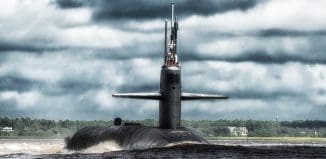Optical Interference Systems to Enhance Vessels

This post is also available in:  עברית (Hebrew)
עברית (Hebrew)
Advanced Grach visual optical interference stations “blind” enemy troops and electro-optic devices, such as night vision equipment, binocular glasses and laser ranging devices with bright flares of light.
Russia will equip its new project 23560 Lider (Leader) —class nuclear-powered destroyers with these systems, local media reported Tuesday.
Sputnik News basing on Izvestia newspaper reported that the system was developed by the Integral plant which was part of the United Instrument Manufacturing Corporation. The media outlet added that Lider-class destroyer’s nuclear propulsion would provide enough energy to equip the ships with as much Grach stations as needed.
Lider-class destroyers are planned to have a displacement of 17,500 tonnes, length of 200 meters (over 650 feet) and a width of 20 meters.
The preliminary project was approved in 2013 and work on technical plans is expected to start by 2017. The universal destroyer is set to replace three classes of ships, including project 1155 anti-submarine destroyers.




























